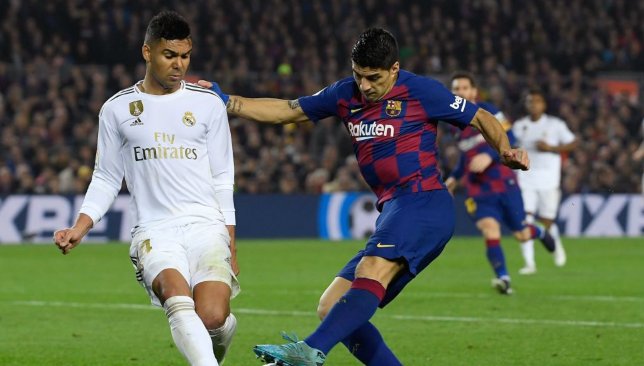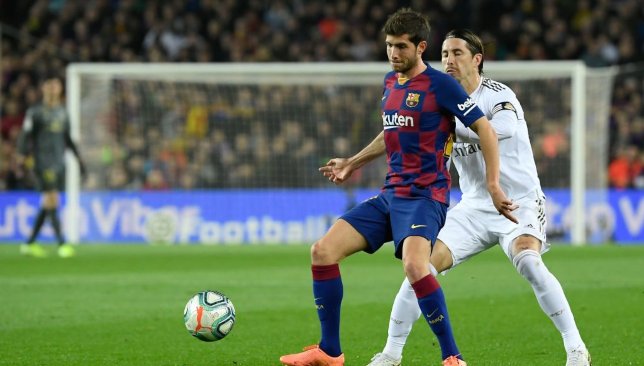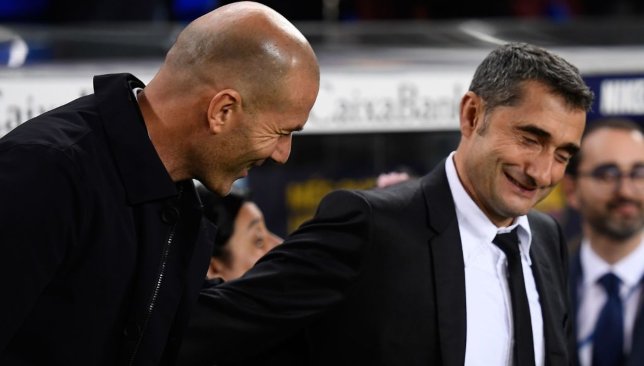
Barcelona and Real Madrid stayed on level terms at the top of La Liga with the first goalless draw between the teams since November 2002 on Wednesday night at the Camp Nou.
The action threw up plenty of talking points to pore over despite the lack of goals, and the first of those is a diminished role for a Camp Nou icon.
Busquets out, Roberto forward
Barca boss Ernesto Valverde made a surprising selection decision by leaving out Sergio Busquets and plumping for a midfield trio of Ivan Rakitic, Frenkie de Jong and Sergi Roberto.
Busquets’ fall from favour has been gradual, with the veteran omitted from several line-ups including the season opener at Athletic Bilbao and October’s meeting with Sevilla. But discarding such an established star from El Clasico is a different matter, and suggests that Valverde no longer trusts Busquets in defensive aspects.
His place in defensive midfield was taken by Rakitic, completing a remarkable turnaround for the Croatian after he was totally overlooked earlier in the season. But the more significant introduction was Roberto, who was the only Barca midfielder during the first half capable of giving decent support to the forward line.
Valverde has often felt compelled to use Roberto at right-back in the past, but on this occasion he placed faith in Nelson Semedo – for an hour, anyway.

Sergi Roberto was preferred to Busquets
Zidane wins tactical battle
The notable aspect of Zinedine Zidane’s team selection was the inclusion of Isco and Gareth Bale, with Luka Modric, Rodrygo and Vinicius Junior all left on the bench.
The visiting team lined up in a lop-sided 4-5-1 formation, featuring a four-man midfield with Isco at the tip, Casemiro at the base plus Toni Kroos and Fede Valverde either side, along with Bale starting out on the right wing – albeit with freedom to roam – with nobody on the left flank other than full-back Ferland Mendy.
Zidane probably fashioned that strange set-up as a response to Lionel Messi’s tendency to drift inside rather than hold his position on the right wing, and the visiting coach’s other strategy was to push his players high up the pitch and deny Barca easy passes out of the back. It worked a treat, with home keeper Marc-Andre ter Stegen and his defenders forced into swinging hopeful balls upfield which were mopped up by the Real defence to spark another attacking phase.
The formation and accompanying tactics allowed Real to totally dominate the first half, with Barca establishing very little sustained possession and forced into a rearguard effort as the movement of Benzema, Bale and Isco caused repeated problems.

Vidal changes the dynamic
Barca desperately needed something to change as the game ticked towards the hour mark with Real firmly in charge, and that change was the introduction of Arturo Vidal from the bench in place of Semedo, with Roberto dropping into the right-back position.
Perhaps because the substitution coincided with a drop in the intensity of Real’s pressing, it certainly made a difference. Vidal added aggression into the midfield, Roberto was more progressive than Semedo down the right flank, de Jong was finally able to impose himself and space finally started to open up for Messi, Luis Suarez and Antoine Griezmann.
But that new openness also meant Real had more opportunities on the counter, and Bale wasted a good chance on the break by firing into the side-netting. The final half-hour was more closely contested as Barca tried to rouse themselves for a late surge, but in the latter stages both teams seemed more intent on making sure they didn’t lose rather than taking risks in pursuit of victory.